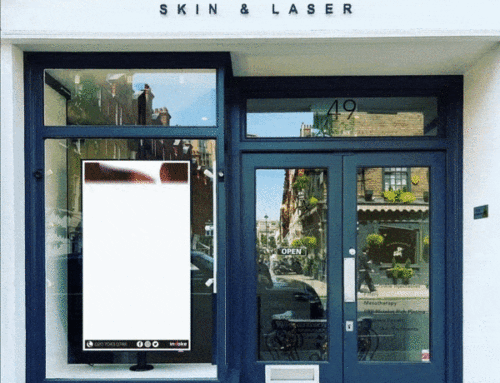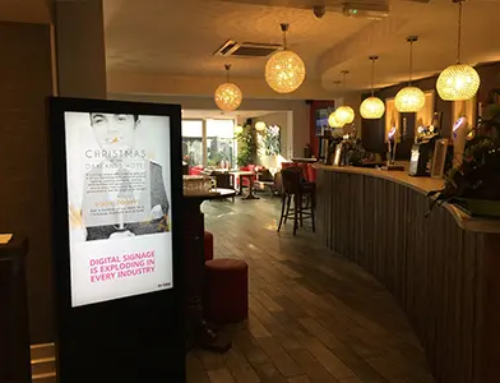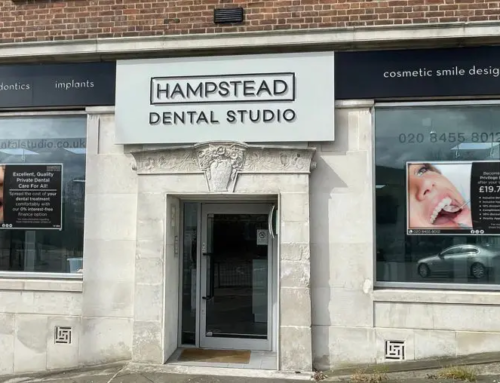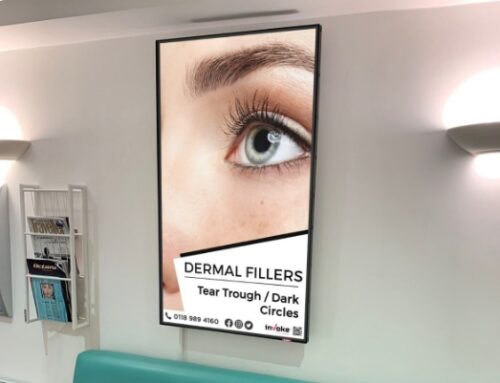To succeed today, brick and mortar retailers need to create strongly differentiated retail experiences. What can a retail environment create that online competitors such as Amazon cannot? The answer is obvious: an amazing, in-person experience. Video walls offer an unparalleled rich, immersive visual experience, and today there is almost no limit in terms of what can be achieved with a video wall to help a brick and mortar establishment differentiate its retail experience. Part of the appeal of a video wall in the retail environment is that unlike traditional merchandising options such as permanent retail fixtures, counters, acrylic displays etc., a video wall is inherently captivating and can always be fresh–simply by updating the content.
What are the next trends:
Targeted advertising was once considered science fiction. Now brands are starting to take advantage of presence detection or even facial detection and leveraging customer interactivity to customize campaigns. The addition of a powerful video wall is just the next logical step to an even more immersive and personal retail experience. Imagine you have an exhibit in front of you at a store, with product on display, but instead of having traditional fixtures with photos, or static design accompanying it, it has an attention-grabbing video wall showcasing videos and other interactive content, relevant to the product. That will capture the customer’s attention.
Here’s another great scenario where a video wall will provide an enhanced experience: Imagine a restaurant where each table takes you to a different part of the world by creating an immersive 360 degree video wall experience. The customer can choose their surroundings. All delivered via a video wall.
Video wall solutions include API’s that allow them to be programmed to react to by trigger events such as where a customer is standing or which product the customer picks up. The video wall displays useful information and marketing videos for that product ending when the customer steps away from the display. The video wall then returns to an attract loop. Computer assisted self-service is the wave of the future. Pick up an item and a visual display tells you more about that. Doing it with a video wall increases the impact and allows the retail display to interact with multiple customers at the same time.
Turning a video wall from a marketing tool into a sales tool
Video walls in retail today are most often used for marketing, but they can also be used by on floor sales staff. Video wall controllers today allow administrators to preset the content that can be played on a video wall and then allow sales people to choose which of the permitted content pieces they want to play using their cell phones. This enables a salesperson to step up to a video wall and play a specific video or switch the video wall to display a web page which the salesperson can then control and use to engage the customer.
With this approach, an automotive dealership can have a large video wall with a tablet touch screen where salespeople (or the customers themselves) can play videos highlighting the features and image of each car. A salesperson could also take control of the video wall and use it to show web pages from the car manufacturer. A good example of this approach is the concept of Tesla Motors’ retail kiosks, as they have eliminated many of the costs of conventional retailers, but an edge over online retail environment.
Increasing the visual impact of a video wall
Video walls are designed to grab attention–a higher impact than a single digital sign can provide, however with more and more video walls in retail and public spaces, some companies are looking for a way to stand out from the crowd. Available from a variety of manufacturers, the artistic or mosaic-style video wall allows customers to angled displays 360 degrees and a mix a variety of display sizes and aspect ratios on a single video wall. They’re an ideal way to catch attention and enhance the look and feel of brick and mortar experience.
Retail banking can also take advantage of the visual impact a video wall can make. Financial service institutions provide a wealth of information, and visual support definitely enhances the communication between institution and customer, but at the same time they need to be very mindful of the cost of their retail footprint. Large bank branches are being replaced by smaller more efficient kiosks and video walls are a great way to command a big presence and improve the customer experience in a small space.
Closing notes
Video walls are one of the most flexible tools retailers have to create in-store experiences and the offer unique opportunities for the modern retail environment. Those companies that embrace this change early will be seen as innovators and tech savvy and will derive the largest brand value from their investment.
Original Post By: Digital Signage Today



